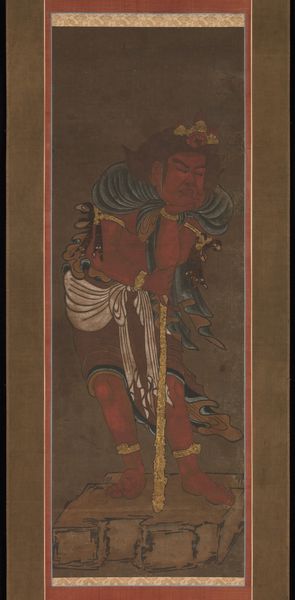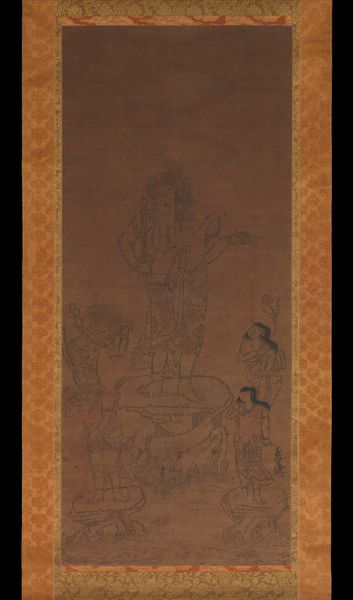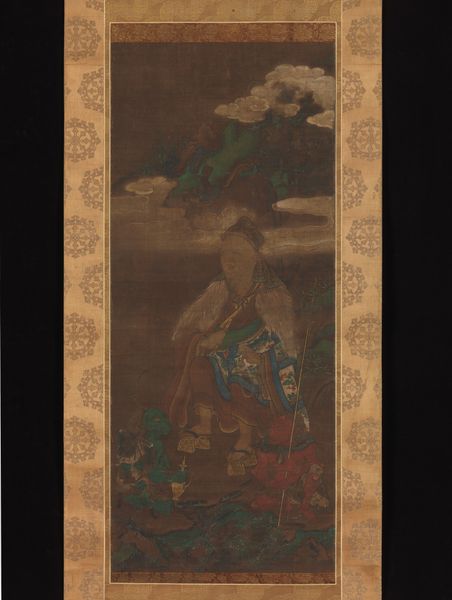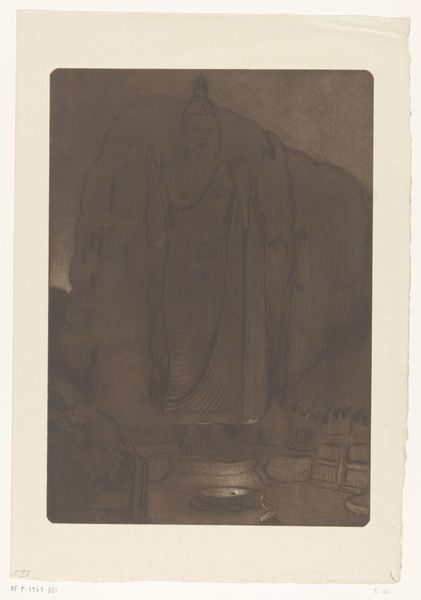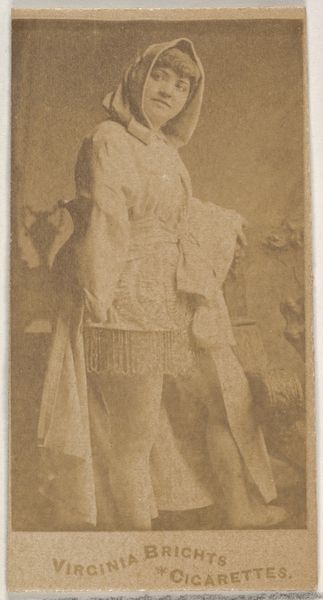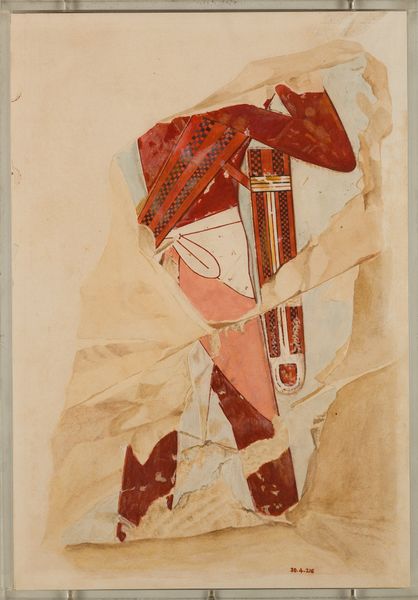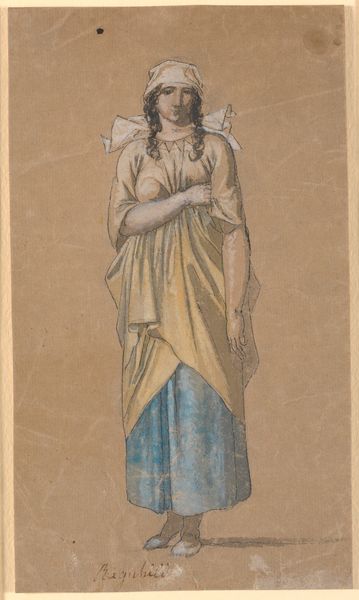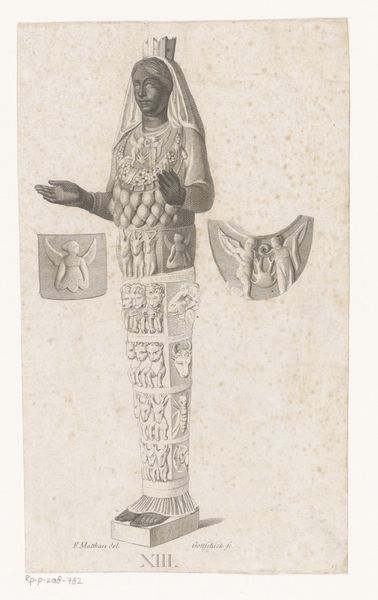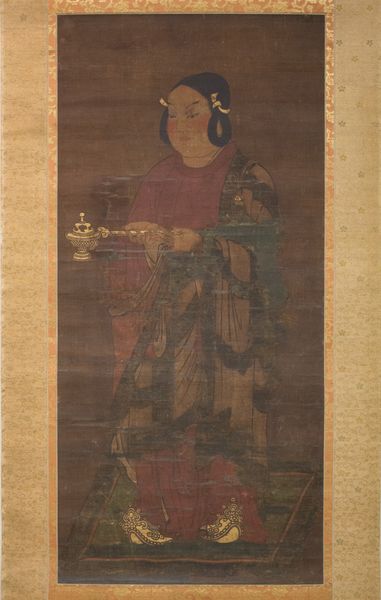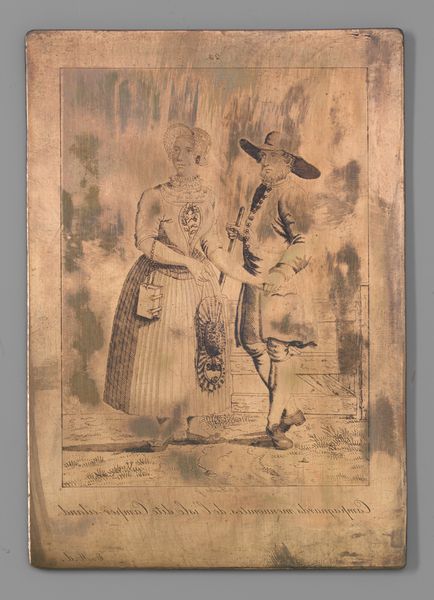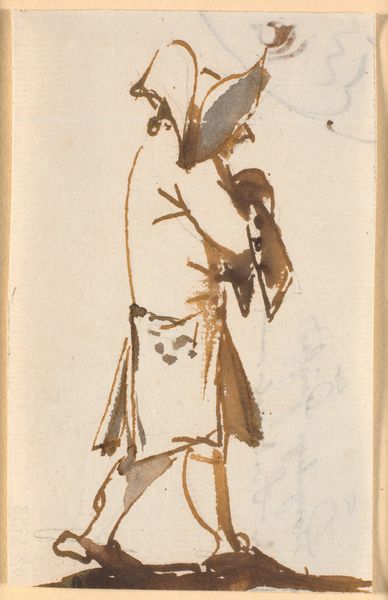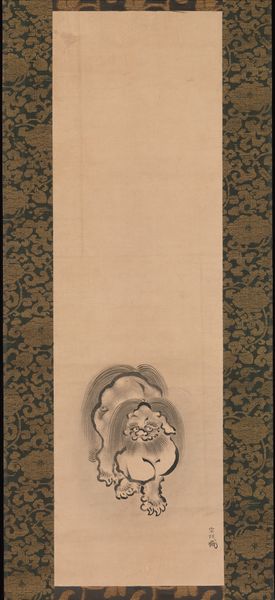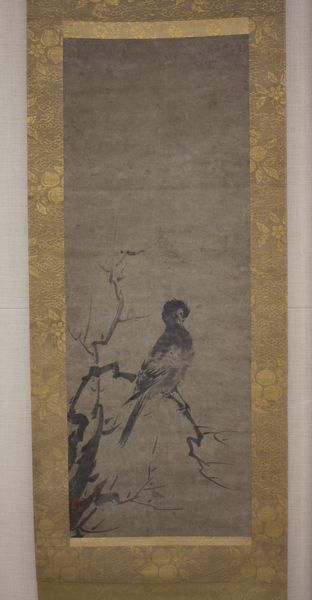
painting, ink
#
medieval
#
painting
#
asian-art
#
figuration
#
ink
#
men
#
watercolor
Dimensions: 43 x 15 3/4 in. (109.2 x 40 cm)
Copyright: Public Domain
Ryūshū Shūtaku (Myōtaku) painted Kongara-doji in 14th century Japan, using ink and color on silk. The perceived luminosity in the painting is a direct result of how the artist manipulated the silk material and the application of pigments. Silk, known for its smooth texture and light-reflecting qualities, was carefully chosen to enhance the ethereal nature of the subject. Ryūshū’s method involved layering ink and colors in a way that exploits silk’s capacity to capture and reflect light. The pigments, made from finely ground minerals and organic substances, would have been applied in thin washes, allowing light to penetrate and refract within the layers, adding depth and a subtle glow. The choice of silk as a painting surface also elevates the artwork. In the 14th century, silk was associated with wealth, trade, and cultural exchange. Kongara-doji becomes more than just a religious icon; it's also an object of considerable material value, and a testament to the artist’s skilled labor. Understanding these material and process elements allows us to appreciate the cultural and social dimensions embedded in the artwork.
Comments
No comments
Be the first to comment and join the conversation on the ultimate creative platform.
